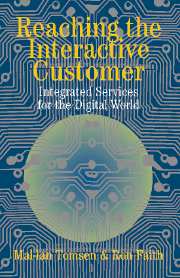4 - Visual Evolution
Published online by Cambridge University Press: 11 August 2009
Summary
Digital networks and devices change our expectations about managing and accessing visual images. Photographs capture memories, movies share rich stories, and we escape to new worlds and perform the humanly impossible via video games. As technologies emerge to give users control over visual imagery, interacting between photos, video, and televised images becomes an active engagement rather than a passive experience.
This chapter explores three ways in which interactive technologies change a consumers' visual expectations. First, we take a look at the change in consumers' expectations about how we build shared memories with digital photography and digital video. Second, we explore the evolution of television, as the viewer gains control over television content. Technologies like digital video recorders (DVRs) and video on demand have changed how we watch TV by extending the viewer's understanding of programming and control in viewing. Finally, we discuss the phenomenon that is video gaming and explore the impact of a networked gaming world. After reading this chapter, you should have a good understanding of the following topics:
Which enabling technologies impact the evolution of visual interactive experiences
How consumers create new learned behaviors by adopting interactive visual technologies
How new visual interactive services are built on top of the next generation of digital devices and networks
Before delving into these areas, let's first take a look at the relationship between consumers and their visual experiences.
CONSUMERS AND VISUAL EXPERIENCES
We watch television, see movies, and take photographs by the millions.
- Type
- Chapter
- Information
- Reaching the Interactive CustomerIntegrated Services for the Digital World, pp. 69 - 94Publisher: Cambridge University PressPrint publication year: 2003



